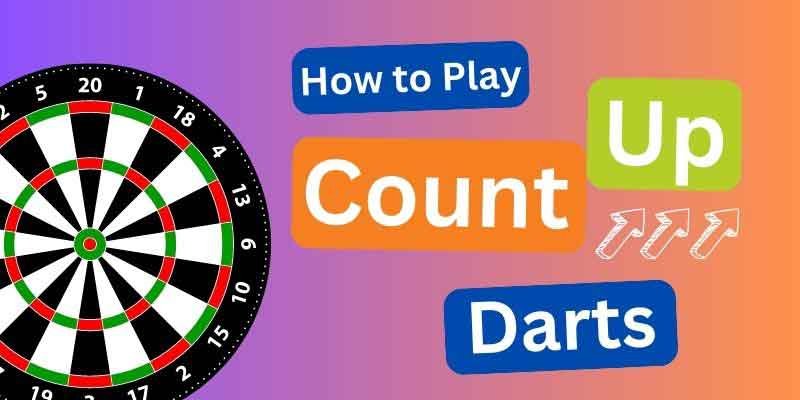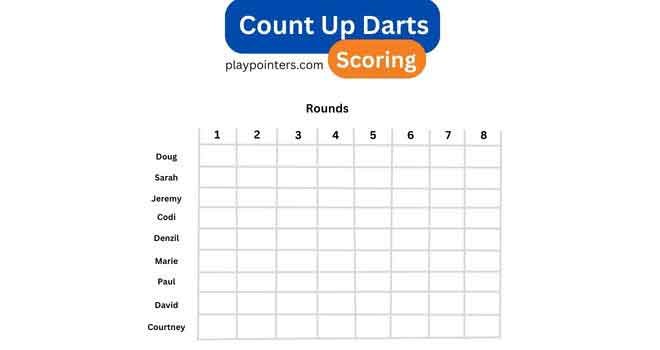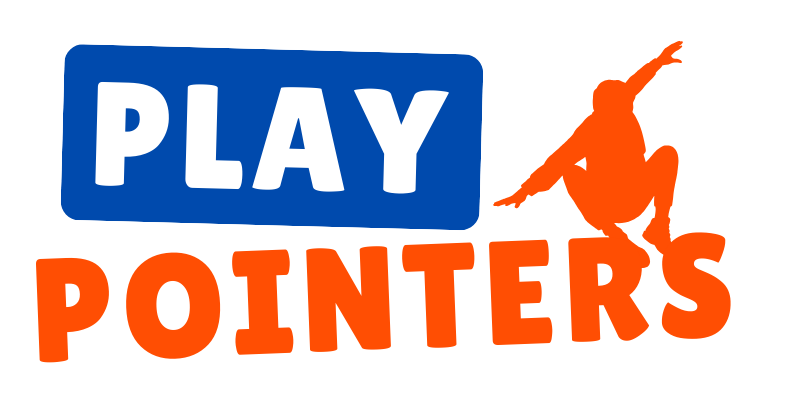How to Play Count Up Darts?

Key Takeaways
- Very simple dart game to play and extremely beginner-friendly
- Can be played solo or with other players
- Develops accuracy and precision
- Players have three darts to score as many points as possible per round
- Usually played over eight rounds
- The highest scorer wins the game
How to Play Count Up Darts?
Count up darts is effortlessly simple to play, and is along similar lines to the game of gotcha darts.
- It can be played by 1 player as a solo practice game or with any number of players
- Each player has three darts per round to score the highest number of points possible
You can either play the game to a predetermined number of rounds decided before the game starts, OR to a predetermined amount of points instead of rounds.
- The traditional way to play the game is to a set number of rounds, which is usually 8 rounds and the number of darts is 24
- You can also choose to play to a different number of rounds, along with other variations (more on that below)
What Is the Objective to Count Up Darts?
The objective of the count up darts practice game is to:
- Score as high possible, the highest score by the end of the practice game wins
- Develop better precision, accuracy and scoring during a game of darts
In games of 501 darts, and similar X01 games, where it’s a race to the finish, the ability to score high, will see higher averages and better chance of winning.
It is why simple and straightforward games like count up are so popular in the world of darts.
Whether you are playing other players or alone, you get each throw to rack up the scores.
How to Score Count Up Darts?
The scoring rules in count up are the same as they are in other popular game like 501:
- Singles count as the singles
- Doubles count as the doubles
- Triples count as triples
- The inner bullseye (red) counts as 50 points
- The outer bull (green) counts as 25 points
After each of the 8 rounds, the total score from the player’s 3 darts thrown are added to the player’s running score in the game.
After all the rounds are completed, the scores are counted up and the player with the highest score at the end is declared the winner.
Scoring a game is easy, simple write the players names down the left-hand side of the scoreboard and the rounds across the top.

Here’s an Example
A player scores:
- 20, 5, 60 with the first three darts of the game and sits on 85 points
The second round scores:
60, 57, 19 which = 136
- Add 136 to 85 and after 2 rounds the player has a score of 221 points
You continue scoring a game of count up like this till the end, and add the total score from each round onto the running score of each player.
Count Up Darts Variations
There are many different variations to count up darts that you can play instead of in the traditional way.
There are different reasons you may want to change the game up a bit, and the skill levels of players is one such reason.
If one player achieves the highest number of points all the time, it can be a little disheartening to beginner players.
Obviously, new players to the game, are never going to consistently hit as many high scores or possess the ability to hit the triple as frequently as experienced dart players.
Count up variations
- Select a target score for the players with a higher skill level to be hit within the 8 rounds
- Call a bust if the player goes over the point threshold and their score reverts to the start of the round
- 100+ throws by the weaker player count as double the value
There are many ways you can make the game more fun and engaging for all players.
Count up darts is an extremely simple and straight forward game, but when you play at different levels, it can be more beneficial to even the playing field during practice
Tips for Winning
One of the biggest tips I can offer you is to play where you feel comfortable on the dartboard.
There’s nothing in the game rules that says you have to aim for the 20s and hit the triple bed every time.
If you hit the triple 20 consistently, go for it.
However, most beginners, find numbers around the middle of the board and those to the left of the bullseye to be the easiest to hit.
They also have a large spread, so if you miss your intended target, you can still accumulate a nice score.
For example
- If you aim for triple 20 and goes to the left, you’re left with 5 points and only 1 point if it goes to the right
- The target numbers 16, 8, 11, 14 segments on the board, have higher surrounding numbers than 1 or 5
- Even if the dart goes completely off target, and lands in the 12, you will still get 12 points
- Likewise, the 19-7-16 area on the board has a large spread to cover stray darts
It’s all about making the most of your 24 throws during a game of count up darts.
Consistently scoring well through each round will bring your score up overall by the end of the game.






